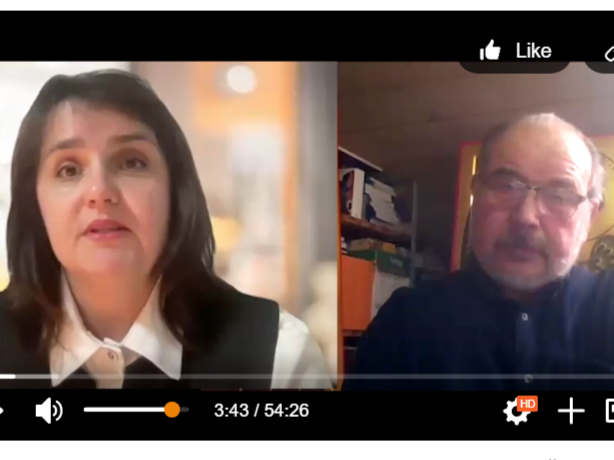Moscow, Russia – As part of the Northeast Asia Peace Initiative, and to mark World Interfaith Harmony Week, UPF-Russia held a webinar, “Art that Brings Peace: Temple of the Life-Giving Trinity, Pyongyang, DPRK,” on February 6, 2024. The program featured Mr. Boris Alekseev, head of the “Joy” artisan society, who went to Pyongyang with a team of artists in 2015 to decorate the interior of a Russian Orthodox Church built under the direction of North Korean leader Kim Jong Il and consecrated in 2006.
UPF-Russia President Maria Nazarova explained, “UPF advocates peaceful reunification on the Korean Peninsula, which is in the interest of all countries in Northeast Asia, and indeed the whole world. Despite the very tense situation between North and South Korea, UPF continues to make efforts that we believe will lay the foundation for peace on the peninsula.” She added that both art and religion have roles to play in bringing people together in a culture of peace.
She then introduced the program and explained the history of the Temple of the Russian Orthodox Church in Pyongyang. It was inspired by Kim Jong Il’s visit to the Khabarovsk Innocent Church on August 22, 2002, where he spent about half an hour in conversation with the clergy. That year he decided not only to build an Orthodox church in Pyongyang, but also to send students to Russia – representatives of the newly formed Orthodox Committee of the Council of the Society of Believers of the DPRK – to receive spiritual education.
In June 2006, Patriarch Alexy II of Moscow and All Rus' received an appeal from the Chairman of the Orthodox Committee of the DPRK, George Ho Il Zin, to accept the community of the temple in Pyongyang into the fold of the Russian Orthodox Church. On August 13, 2006, the great consecration of the temple took place.
Since 2012, with the assistance of the Russian Embassy in the DPRK, preparations were made to decorate the interior of the temple. The "Joy" artisans were commissioned to plan and carry out this project, and in July-August 2015, they were able to complete this complex and labor-intensive work. Mr. Boris Alekseev explained that his artists group, which was formed about thirty years ago, had completed religious murals in Russia and beyond, including a temple in the center of Rabat, Morocco, which is an Islamic state. But this was their first visit to North Korea.
Mr. Alekseev showed photos of Pyongyang, explaining that the society was in many ways reminiscent of the Soviet Union, but also different. He explained that the North Korean communist symbol includes a brush between the hammer and sickle. “The brush represents creativity,” he said. His team was taken to visit monuments and museums in the city. “Of course, artistic beauty is combined with a certain political dominance, which I was interested in seeing. We found ourselves a little in our past.” Yet, he added, “Pyongyang itself is a surprisingly modern city.”
The Russian artists were assisted by several North Korean artists, and the Russian Embassy provided “everything from transport to stepladders and paint buckets.” They were also joined by the Korean priest, Father Fedor, who graduated from the Lavra Russian Orthodox Seminary, near Moscow, and spoke Russian quite well. And they were accompanied always by a representative of the People's Party of Korea.
Mr. Alekseev shared photos of the colorful murals and paintings that his team completed, transforming the barren interior of the temple into a beautiful and uplifting setting, reflecting the spirit of the Catholic faith. “Our iconography comes from the Gospel, from the Good News, and all icon painting is directly related to the plots and themes that the evangelists conveyed to us,” he explained. There were also depictions of the Roman Emperor Constantine, from whom the official Orthodox religion began, as well as other saints.
At the end of their work, the artists participated in a service at the newly decorated temple, attended by embassy staff and a few Korean parishioners. There was also a performance by a choir. Mr. Alekseev explained that the temple was not only a place of worship, but also a venue for cultural events.
In conclusion, he said, “This project was carried out on the instructions of Kim Jong Il, was built with Korean money in honor and in memory of Russian-Korean friendship, and decorated by Moscow artists. I think this will be a contribution so that one day, as Maria said at the beginning, despite the disagreements between people living in different cultures, they will unite for one high goal, for the sake of happiness on earth.”


















